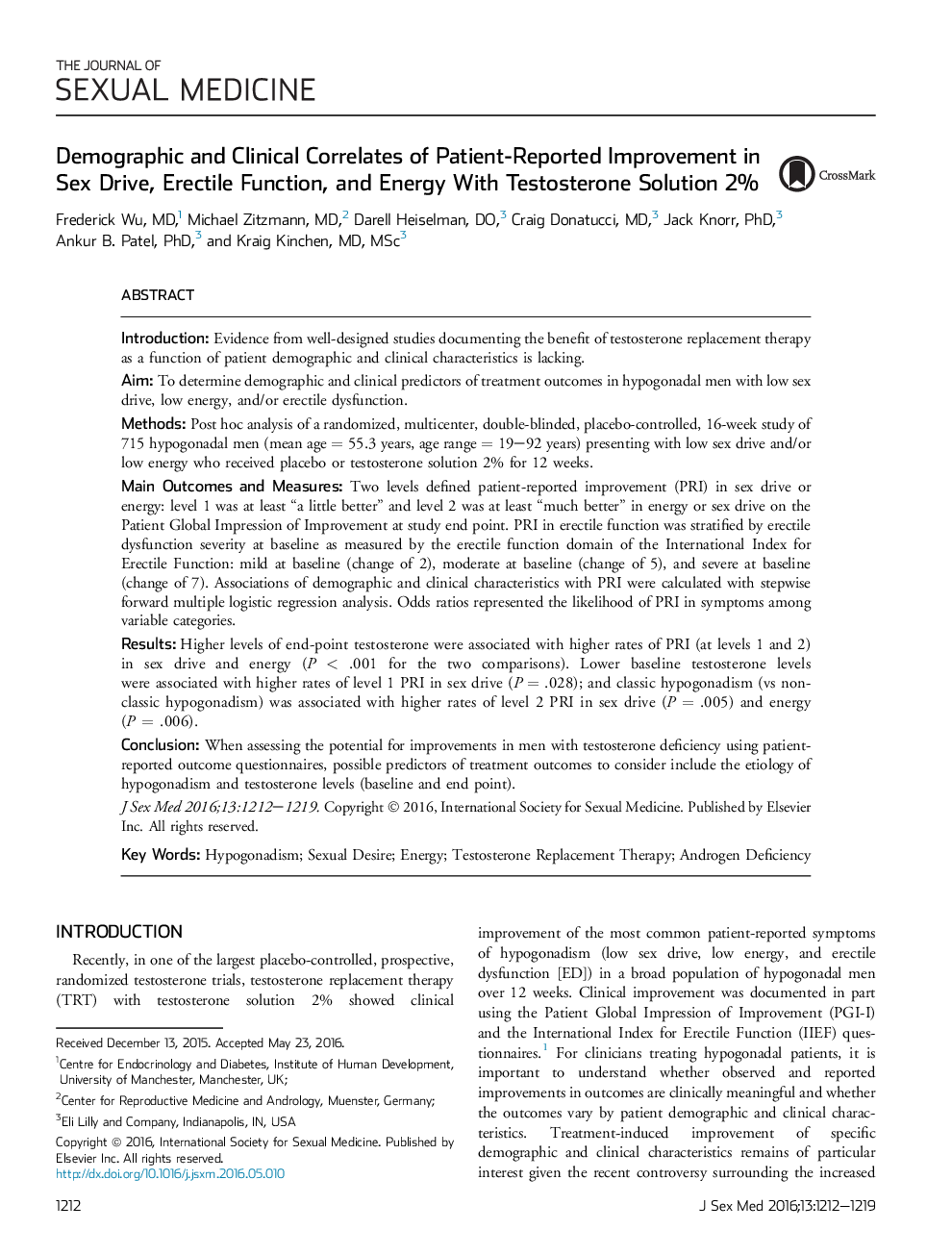| Article ID | Journal | Published Year | Pages | File Type |
|---|---|---|---|---|
| 4268999 | The Journal of Sexual Medicine | 2016 | 8 Pages |
IntroductionEvidence from well-designed studies documenting the benefit of testosterone replacement therapy as a function of patient demographic and clinical characteristics is lacking.AimTo determine demographic and clinical predictors of treatment outcomes in hypogonadal men with low sex drive, low energy, and/or erectile dysfunction.MethodsPost hoc analysis of a randomized, multicenter, double-blinded, placebo-controlled, 16-week study of 715 hypogonadal men (mean age = 55.3 years, age range = 19–92 years) presenting with low sex drive and/or low energy who received placebo or testosterone solution 2% for 12 weeks.Main Outcomes and MeasuresTwo levels defined patient-reported improvement (PRI) in sex drive or energy: level 1 was at least “a little better” and level 2 was at least “much better” in energy or sex drive on the Patient Global Impression of Improvement at study end point. PRI in erectile function was stratified by erectile dysfunction severity at baseline as measured by the erectile function domain of the International Index for Erectile Function: mild at baseline (change of 2), moderate at baseline (change of 5), and severe at baseline (change of 7). Associations of demographic and clinical characteristics with PRI were calculated with stepwise forward multiple logistic regression analysis. Odds ratios represented the likelihood of PRI in symptoms among variable categories.ResultsHigher levels of end-point testosterone were associated with higher rates of PRI (at levels 1 and 2) in sex drive and energy (P < .001 for the two comparisons). Lower baseline testosterone levels were associated with higher rates of level 1 PRI in sex drive (P = .028); and classic hypogonadism (vs non-classic hypogonadism) was associated with higher rates of level 2 PRI in sex drive (P = .005) and energy (P = .006).ConclusionWhen assessing the potential for improvements in men with testosterone deficiency using patient-reported outcome questionnaires, possible predictors of treatment outcomes to consider include the etiology of hypogonadism and testosterone levels (baseline and end point).
